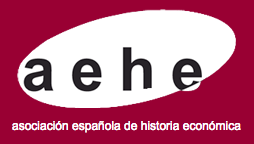The commercial structures of the Catalan cotton industry: travellers’ success in the last third of the 19th century
DOI:
https://doi.org/10.1016/S1698-6989(08)70170-XKeywords:
Cotton industry, Commercialisation, Vertical integration, Networks, Spain, 19th Century, N6, N7, D3, D8Abstract
Catalan cotton industry has been characterised by vertical integration of manufacturing and commercialising. Until the mid 1860s this integration took several and incomplete forms, but since then travellers became the central players in cotton firms’ commercial structures. As it has been previously said in the literature, this was because a basic railways network was established at that time. Thanks to this new transport, large and medium size firms could cover all the Spanish market with very few sellers: some permanent agents in main cities and some travellers around the country. These men promoted firms’ sales and gave first-hand information about consumers’ tastes, competitors and clients’ financial soundness. They became then essential for cotton manufacturers.Downloads
Downloads
How to Cite
Issue
Section
License
Aquellos autores/as que tengan publicaciones con esta revista, aceptan los términos siguientes
- Los autores/as conservarán sus derechos de autor y garantizarán a la revista el derecho de primera publicación de su obra, el cuál estará simultáneamente sujeto a la Licencia de reconocimiento de Creative Commons Reconocimiento-No comercial-Sin obra derivada 4.0 Internacional que permite a terceros compartir la obra siempre que se indique su autor y su primera publicación esta revista, y no permite hacer uso comercial de la misma ni tampoco obras derivadas.
- Los autores/as podrán adoptar otros acuerdos de licencia no exclusiva de distribución de la versión de la obra publicada (p. ej.: depositarla en un archivo telemático institucional o publicarla en un volumen monográfico) siempre que se indique la publicación inicial en esta revista.
Plagio y fraude científico
La publicación de un trabajo que atente contra los derechos de propiedad intelectual será responsabilidad de los autores/as, que serán los que asuman los conflictos que pudieran tener lugar por razones de derechos de autor. Los conflictos más importantes pueden darse por la comisión de plagios y fraudes científicos.
Se entiende por plagio:
- Presentar el trabajo ajeno como propio.
- Adoptar palabras o ideas de otros autores sin el debido reconocimiento.
- No emplear las comillas u otro formato distintivo en una cita literal.
- Dar información incorrecta sobre la verdadera fuente de una cita.
- El parafraseo de una fuente sin mencionar la fuente.
- El parafraseo abusivo, incluso si se menciona la fuente.
Las prácticas constitutivas de fraude científico son las siguientes:
- Fabricación, falsificación u omisión de datos y plagio.
- Publicación duplicada.
- Conflictos de autoría.





